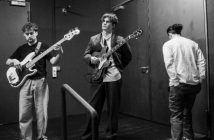In the modern era, lip-syncing is all around us, changing the face of what it means to be “live”. From battles on RuPaul’s Drag Race and Lip Sync Battle to controversial concerts and “failed” live performances, it’s both the bane and boon of the live industry. Equally celebrated and shunned, the original lip-syncing legacy extends from the 1960s to current days and has been at the forefront of many performances, bringing about important questions: “does lip-syncing fail to give authenticity” or “and does lip-syncing mar the audience’s experience”?
While some musicians don’t sound as good as they do on record, others sound better, but what trumps the whole experience is the authenticity that “live” aspects bring to a concert. Yet, lip-syncing is always cropping to audience anger when used as dishonest means and it’s even caused controversy for artists who have wanted to sing live but have been expected to lip-sync.
Look at the Top of the Pops in the 80s where musicians were expected to lip sync and mime rather than perform live. It wasn’t until the infamous 1991 performance from Nirvana which saw the performance of their song ‘Smells Like Teen Spirit’ deliberately messed up in a statement against the show’s faked “live” aspect. In a performance that sees frontman, Kurt Cobain, lifelessly strumming a guitar in a mechanically fake way or the onstage carnage that ensues when audience members disrupt the performers as the song continues playing unabated; Nirvana’s statement against lip-syncing was remarkably clear as ruining an experience, not just for audience members but for musicians as well. It established lip-syncing as a faithless legacy that felt fraudulent and more importantly fake, and had no comfortable place within the music industry, or at least if it was the main proprietor of a live performance.
However, a famous musician caught in the complication of lip-syncing was none other than Michael Jackson, leaving many people unsure of how far the “dishonesty” of lip-syncing stretched. Anyone who saw Michael Jackson in his prime often revelled in the spectacle of his concerts with bombastic dance numbers, killer vocals, and all-round great performances. However, a prevalent fact remained that Jackson often favoured lip-syncing during songs like ‘Billie Jean’ where the dance routines were too demanding to be able to provide vocals in a competent way. While at first, it seems like exploiting the audience, in actuality, one has to wonder if there was a valuable trade-off. Jackson would always sing live during his ballads (which often dominated most of his concerts) and never performed whole concerts using lip-sync. When the truth was revealed, some argued it marred the experience while others saw it as a worthy trade-off; a Michael Jackson concert wasn’t just about the singing but about the whole experience, something that Jackson delivered expertly on.
Lip-syncing is vast and complicated, predominantly hated when used without the audience’s knowledge and often loved when used as a riff to greater things. It’s had a long history and this article only scratches at the surface of its legacy, but one fact remains: lip-syncing is here to stay.
You can watch the infamous Nirvana Top of the Pops appearance below:



